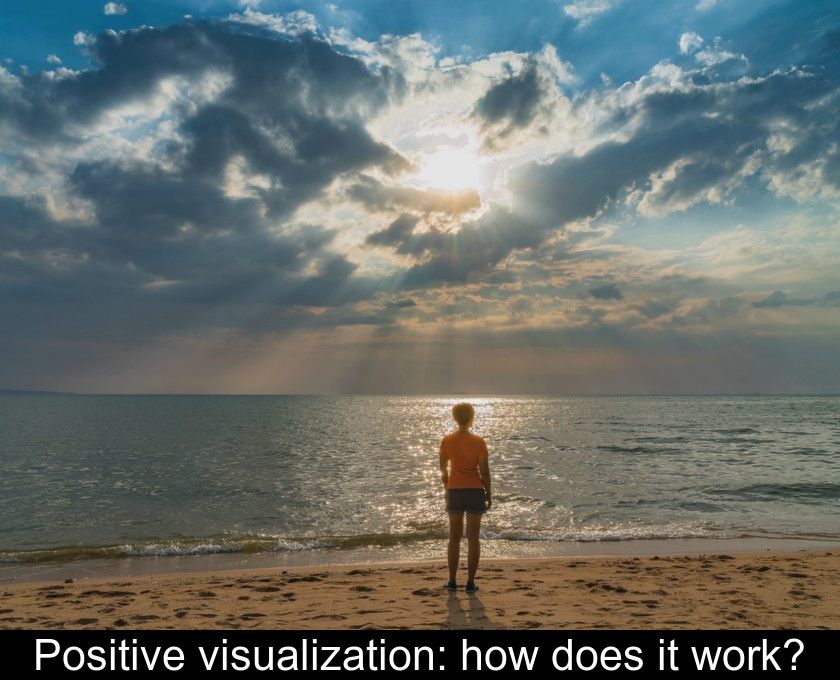Positive Visualization: How Does It Work?
Positive visualization is a very popular personal development tool currently. This technique, used by sophrologists, hypnotherapists, and sports coaches alike, is not reserved for high-level athletes! To benefit from its advantages, all you need to do is work your imagination and practice diligently.
What is positive visualization?
As its name suggests, positive visualization consists of mentally visualizing positive situations in order to better achieve them in real life.
For example, if you have a job interview coming up and the thought stresses you out, this technique can help you arrive more relaxed on the day because you will have previously visualized yourself successfully passing the interview.
This method, which has been around for a long time, is known by various names: it is also called creative visualization, creative visualization or simply mental preparation.
It is reminiscent of the famous Coué method which uses positive thinking and autosuggestion for healing purposes.
What is the purpose of positive visualization?
Positive visualization is a valuable tool that can help you more easily achieve your goals. This method can be used in all areas of life, including improving health and well-being, as well as boosting performance at work or in the gym.
It is particularly used:
• In coaching for the mental preparation of high-level athletes
• In sophrology and hypnosis to reduce stress or to help the patient achieve certain goals such as losing weight or quitting smoking
• In personal development to develop self-confidence and prepare for events such as an oral exam or public speaking…
How to do positive visualization?
In theory, the principle of positive visualization is very simple since all you have to do is visualize what you want to achieve or the goal you wish to reach.
In practice, for this creative visualization to work, certain conditions must be met. We will explain below what you need to do to fully enjoy the benefits of this mental imagery technique:
1- Clearly define your goal for visualization (only one per session!).
2- Settle down in a quiet place where you won't be disturbed. Remember to put your phone on airplane mode. Sit comfortably or, even better, lie down and close your eyes as if practicing a classic relaxation session.
3- If your mind is cluttered with distracting thoughts, start by focusing on your breathing: focus your attention on the air entering and leaving your nostrils and on the movements of your belly.
4- Once you feel relaxed, you are ready to practice visualization itself. Visualize your goal as if you have already achieved it. Imagine the scene with as much detail as possible.
It's not enough to "see" the scene with the eyes of your mind. You must totally immerse yourself in this positive situation by using all your senses. Perceive the shapes and colors but also the sounds and smells around you.
Imagine yourself in the situation and feel the sensations of your body (its position, its movements) as if you were there. High-level athletes preparing for a competition visualize themselves running or winning a giant slalom and you should strive to do the same.
5- Once you have fully immersed yourself in this scene with all your senses, you can come back, becoming aware of the points of support of your body with the surface on which you are sitting or lying down. Take a deep breath before opening your eyes to return to the present moment.
How does it work?
Positive visualization is a highly effective technique of mental preparation because it uses your imagination and the plasticity of your brain. When visualization is done well, your brain cannot tell the difference between the situation you imagine and a real situation. Therefore, if you have repeatedly trained yourself to imagine a situation positively, your brain will be prepared for it when you face it in reality and approach it with confidence. To make this creative visualization work, you must pay attention to the following points:
• Always get into a conducive state of mind (calm and relaxed) before starting to visualize your goal.
• Avoid negative images and words at all costs during this exercise. As the name suggests, this visualization must always remain positive. Do not think about what you do not want (for example: I don't want to be shy in public speaking) but focus on what you want (I want to express myself confidently and pass my exam).
• Practice every day, seriously and regularly, to effectively communicate the message to your brain and reprogram your neural circuits. If you want to be ready on the day or simply feel the benefits of this method on your mind, you must train yourself.
Note: If you are afraid that you will not succeed or define and visualize your goals well, you can seek help from a sophrologist or a practitioner trained in medical hypnosis (usually doctors and nurses who practice in clinics in the city).












